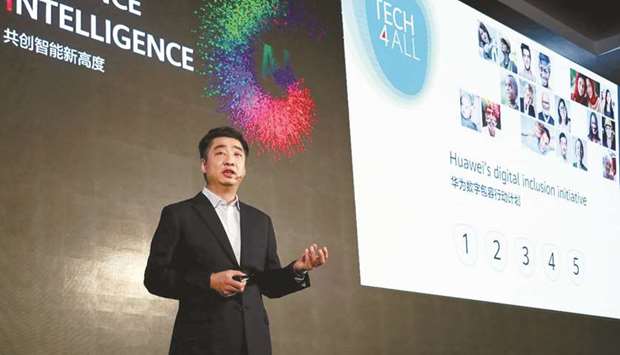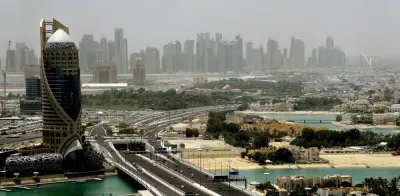Digital inclusion means using digital technology to promote inclusive development and leaving no person, home or organisation behind, Huawei deputy chairman Ken Hu has stressed.
He made the observation during his speech at the TECH4ALL Summit held as part of Huawei Connect 2019.
The theme of the summit was ‘How Inclusive Innovation Can Empower the World’.
In his speech, Hu elaborated on Huawei’s TECH4ALL initiative and shared the initiative’s current progress. He also called on more individuals and organisations to join Huawei in addressing global issues related to healthcare, education, development and the environment.
The target of TECH4ALL is to help another 500mn people benefit from digital technology in the next five years.
Making technology warmer by spreading love and touching stories across the globe
“Technological advancements are accelerating the advent of the intelligent world. While enjoying the conveniences of science and technology, we must also look at the other side of the story,” the company said in a statement. “Digital gaps still exist: In many cities in China, the elderly might be unable to hail a taxi on the street, because taxis are now often booked via mobile phones. In Bangladesh, women don’t have many opportunities to learn about computers. On the Comoros, until two years ago, the inhabitants were isolated from the outside world, because they had no communications network.”
As the infrastructure of the intelligent world, the ICT industry has played a vital role in promoting national economic growth and boosting social welfare and happiness. It will also help achieve the United Nations’ Sustainable Development Goals, enabling humanity to address challenges like poverty, inequality, climate change, environmental deterioration, economic issues and healthcare problems. The ultimate goal is to not leave anyone behind in the digital world.
“Huawei has pressed ahead with its long-term initiative, TECH4ALL, to promote digital inclusion. Digital inclusion means every individual and organisation can equally access and use information and communications technology,” the statement continued.
Today, African children can see the outside world. Visually impaired children can experience the endless joy of reading. People can now understand the frequencies whales send out to their loved ones. The list goes on.
In general, technology is considered a tool that gradually distances people from nature. However, more and more real, touching stories about how technology brings humanity closer to nature are spreading in this rapidly developing world.
“Technology shouldn’t sit in an ivory tower. Instead, it should benefit all humanity. We firmly believe that digital technology will benefit every person, home and organisation,” said Hu.
Technology, applications and skills: where digital inclusion begins
Huawei’s vision and mission is to bring digital to every person, home and organisation for a fully connected, intelligent world. ‘Digital inclusion’ best reflects the social value that Huawei can create through its vision. Against this backdrop, TECH4ALL was born.
“Digital technology is reshaping the world. We want it to benefit everyone and we want digital inclusion for all. In this regard, technology is the foundation, applications are the key and skills provide assurance,” said Hu. “TECH4ALL will focus on three areas: technology, applications and skills.”
Technology: Huawei will continuously reduce connection costs and remove coverage barriers through technological innovation in connectivity, AI, cloud and mobile devices.
Applications: Huawei will empower ecosystems and help developers create more applications for different communities and industries.
Skills: Huawei will work with local governments, communities and other sectors to enhance the digital skills of all of society.
“We must have a clear direction if we want to leverage what we have to create value,” said Hu. While determining the direction for TECH4ALL, Huawei took into consideration its available capabilities and viable directions based on the potential impact of the ICT industry and the meaning of digital inclusion. Huawei also identified four domains in which it could comprehensively promote digital inclusion.
Healthcare: Using digital technology to give more people easy access to better healthcare resources.
Education: Using technology to give the disadvantaged, such as women and teenagers, equal access to education and enrich education resources.
Development: Eliminating development gaps for various sectors, businesses, regions and groups, ensuring equal access to digital resources and enabling technology to benefit everyone. Environment: Using innovative technologies to help NGOs more efficiently protect and conserve ecosystems.
As of today, Huawei has ensured smooth communications for more than 3bn people around the world, and supported the stable operations of more than 1,500 networks in more than 170 countries and regions. Hu said that in the next five years, the company will help another 500mn people benefit from digital technology. These benefits will not be limited to connectivity, also including the benefits of technologies like AI, cloud and smart devices as well as related applications and skills.
One small step today: more people are welcome to join
In the Paediatrics Department, babies cannot explain what’s wrong with them, which presents a huge challenge. Congenital eye diseases among babies and young children are some of the most difficult to diagnose in the Paediatrics Department. In many cases, young children just cry when their eyes are uncomfortable, and their parents often think they are just making a fuss out of nothing. Due to a lack of related knowledge, many children with eye diseases are left undiagnosed for too long and thus miss out on the best opportunity for treatment. This then negatively impacts the rest of their lives.
In Spain, Huawei is partnering with IIS Aragon (a local medical research lab) and DIVE (a local research centre) to develop a new medical device that can detect visual impairment in young children. With this device, children simply need to look at images on the screen of Huawei’s Matebook E, which stimulate the eyeballs. The DIVE system then collects gaze data and transmits this data to a Huawei P30 phone. With the help of the HiAI and the machine learning capabilities of the P30 phone, a doctor can then analyse the data and detect the signs of eye diseases. This is an APP called Track AI on the P30 phone.
With the help of digital technology, trained parents can also detect visual impairment in their children, just like skilled doctors. This approach is even faster, simpler and more efficient, and will benefit 19mn visually impaired children around the world.
This is just a snapshot of the TECH4ALL initiative. Currently, Huawei is working with many international NGOs to address problems related to healthcare, education, development and the environment on a much bigger scale.
In Kenya, Huawei is working with organisations like Unesco and Close the Gap, a NPO in Belgium, to convert cargo containers into mobile, digital classrooms that provide digital skills training to teachers, women and young entrepreneurs in remote rural regions in Africa. This will give them equal access to digital education resources.
Through these efforts, the futures of numerous young people will change for the better.
In tropical rainforests, Huawei is working with Rainforest Connection (RFCx) to convert a huge number of used Huawei mobile phones into solar-powered devices that will monitor the rainforests. This is transforming these mobile phones into the ‘ears’ of the rainforests. Equipped with AI, these phones are now used to listen to and identify the sounds of trucks and electric saws that are illegally felling trees, helping international environmental protection organisations more efficiently protect the planet. Next year, another 6,000sq km of tropical rainforests in even more countries will benefit from these efforts.
The TECH4ALL Summit has attracted representatives from many organisations. These include international organisations such as Unesco, WWF and WEF, NGOs like RFCx and DIVE Medical, and governments, businesses and industries. All of these have contributed ideas to the TECH4ALL initiative.
At the summit, Hu extended an invitation to all the participants to join together, saying: “Digital inclusion will need the joint efforts of businesses, governments and society at large. Currently, we have just made the first small step. We welcome more people and organisations to join us.”
* Huawei Connect is an annual flagship event hosted by Huawei for the global ICT industry in Shanghai. The event ends today.

Ken Hu speaking at the TECH4ALL Summit.


